Postcards from Home
-
Postcards from Home: D2E
April 26, 2021 13:36

This series began one year ago at the start of the pandemic when I wanted to share what is going on each month at the winery or in the vineyard. They are snapshots of life in and around our little corner of Dry Creek Valley. I have mentioned before that I send my grandsons postcards from the road—I am on the lookout for a postcard that captures the place I have traveled to so I can share the experience with them. These do the same thing—bring a bit of Pedroncelli to you!
April is known as Down to Earth (D2E) month in California with thanks to the Wine Institute, a group dedicated to supporting and lobbying for the state’s wineries. We have been a member for decades and I am a member of the board representing Sonoma County along with other vintners. Over 1000 wineries belong to the group stretching from border to border. Wine Institute also began the Sustainability program and have chosen to focus on this for D2E month.
D2E celebrates sustainability in the vineyards and wineries, showcasing green from grape to glass all around the state. You’ll find some great information here as well as many live presentations throughout the rest of the month. At Pedroncelli spring is in the air—our vines are waking up, budbreak is taking place as each variety, from Sangiovese the first out to Cabernet Sauvignon, takes its turn to push out and reach for the sky and the upcoming vintage.
Alto Vineyards Sangiovese
Mitch, Vineyard Assistant and 4th Generation Member, sent me photos of the first vineyard to begin budbreak. While the other varieties weren’t too far behnd, our Sangiovese is almost always the first out. In fact the vineyard crew delays pruning the vines for this very reason—they are the last to be pruned and the first to push out buds. It helps protect the new growth from possible frost damage. I guess they aren’t the only ones ready to start the vintage.
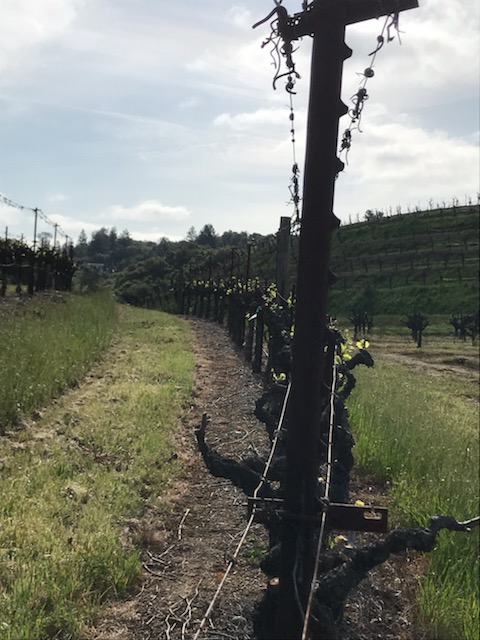
Mother Clone Zinfandel
The three generations of Zinfandel on the home ranch have begun another year of the growing season. The vines, ranging in age from over 100 years to the youngest at 8, were a little slow in waking up but now you’ll see they are in full swing heading toward vintage 2021. The beauty of this old vine is in the gnarled arms-the knots indicate previous canes and shaping of the vine which has produced fruit for nearly 40 years...and counting.
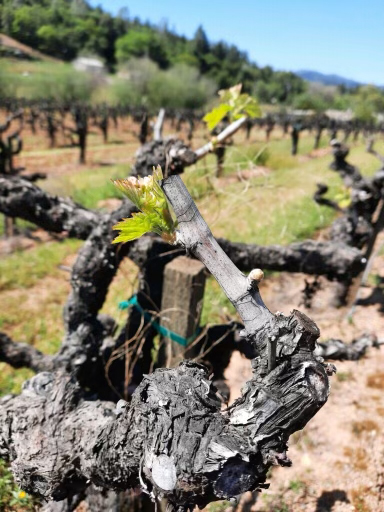
On Being Sustainable
We were certified sustainable in 2017, our 90th anniversary. This reflects our time here in Dry Creek Valley—the three ‘e’s of sustainability are Environmentally sound, Economically feasible and socially Equitable and is woven into our legacy. Mitch Blakeley, fourth generation, became the coordinator of this program and works with the auditor each year to further the green footprint in both the vineyard and winery. Cover crop is just one of the ways we tread lightly in the vineyard—also less tractor work which equals lower emissions. All of these work toward a better future for all of us. For more about what we do visit here.
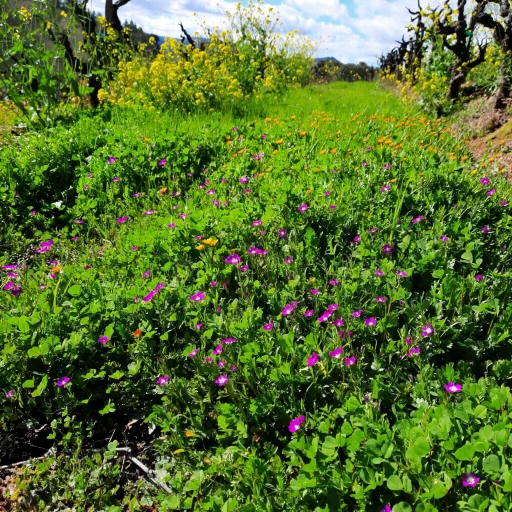
April Flowers
It just wouldn’t be fair to close this Postcard series without a photo of the beauty flowers bring to our little corner of the world. Bees depend on the flowering rosemary around our tasting room and other plants in and around the winery. The cover crop, recently tilled under to feed the soil with necessary nutrients, is all part of being down to earth.
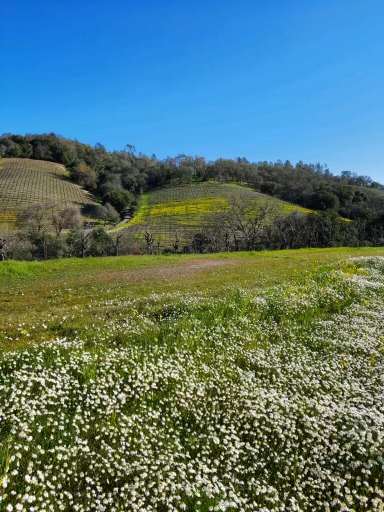
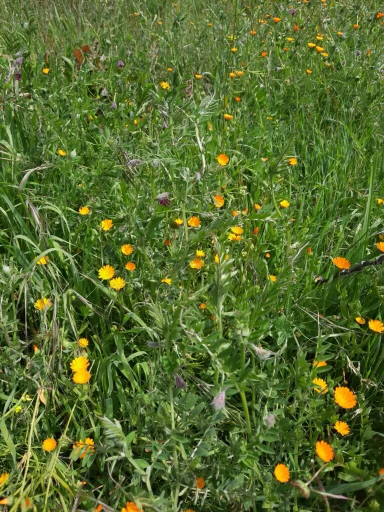
-
Postcards from Home: Bottling Up
March 30, 2021 16:10

March brings us rain, spring, setting our clocks forward and, at Pedroncelli, the cellar crew is busy getting wines ready for their final stop before coming to you—the bottling line. We usually begin bottling the white wines from the previous harvest in February followed by the red wines from the previous harvest as they finish aging—some see 12 months while others a little longer. The bottling schedule lasts for about six months—just in time to get ready for harvest and all that brings.
From winemaker Montse Reece is a snapshot of preparation to bottle. “One week before bottling we rack the wine off (with either bentonite for white wines and gelatin for reds) and filter the wine. All wines, except the Port, get cross-flow filtered. After filtration I adjust the sulfur levels for bottling and check the specific gravity that I use to check the fill levels during bottling. We order nitrogen to purge the empty glass bottles before they get filled with wine.
Bottling day starts with the sterilization of the line (pipes/filler bowl/filters). During bottling we check fill levels and adjust, if necessary, the oxygen levels in nitrogen purged bottles and in wine to be sure we are under 1 ppm (part per million) O2, vacuum pressure on the corks, torque pressure in the screw caps and filters pressure. Then the wine is packaged and stored until release.”In Line
Montse mentions nitrogen to purge the bottles and here they are in line to begin the filling process.
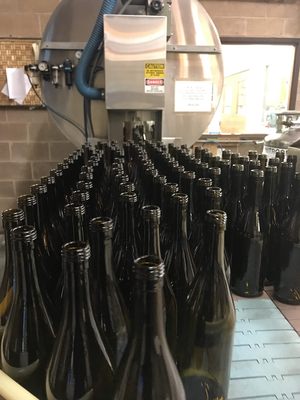
The Line Up
Once filled and sealed with a screw cap or cork, they make their way to the labeling section.
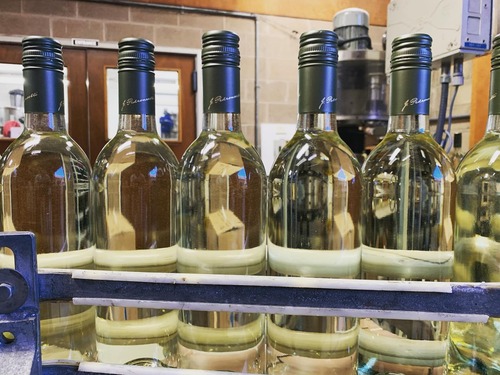
Labeling Up
In the early days there was the label and then there was glue, slicked onto the label as it was placed on the bottle. If these were on white wines they’d eventually slide off after being on ice for an hour or two. Today self-adhesive labels are the way to go and do their part to stick when submerged in that tub of ice at your next picnic.
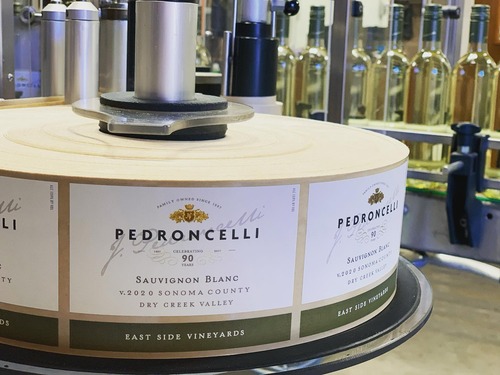
The Finished Product
Our family of wines waiting for you to try one—we make many choices so there is something for every palate and taste.
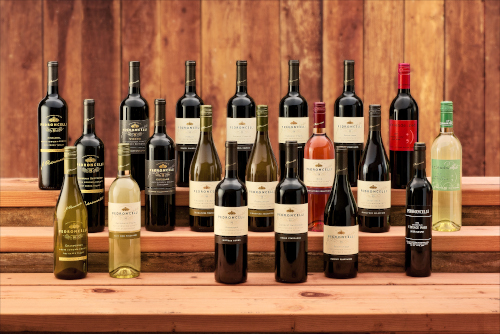
-
The Importance of Aging
February 16, 2021 14:37
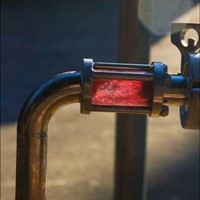
In this post we take a closer look at the barrel room and what goes on during the year. If you have visited our tasting room you would see we have a window looking into the process-at different times of the year the view is of the cellar crew taking down each and every barrel about every three months-whether it is to empty them out of the previous vintage, top them off or fill them up with the latest harvest.
Barrels at Rest
Quietly aging away, these barrels are at rest. Incremental changes happen over the cellar year. There is quite a bit of work that goes into ensuring each barrel is checked several times throughout the aging process. We have up to 2000 barrels at any given time during the year either being filled or being emptied of their contents.
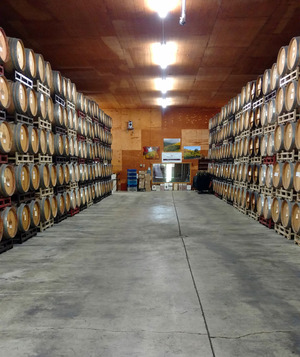
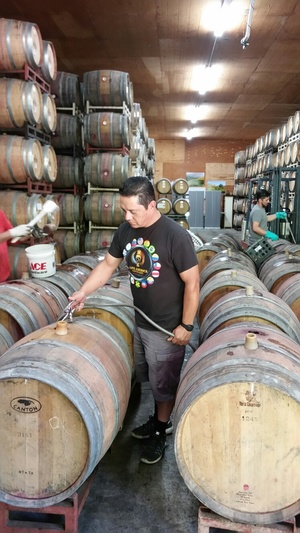 Barrel Vocabulary
Barrel VocabularyThere are some fancy words in the world of wine, some of them borrowed from the French winemaking tradition: Bâtonnage, Ullage, Sur Lie. In this photo of cellarmaster Polo Cano and his crew you’ll see them in action as I describe some of these terms:
We use the word ullage to describe the loss of wine due to evaporation while the wine ages in barrel or bottle. In a bottle you can see the fill line (or ullage) and if there has been too much loss over time then the wine may have had too much oxygen and, in some cases the wine might be bad. The same happens in the barrel but to a larger degree-larger container more loss, meaning a gallon or three over the year. This is often referred to as the angel’s share-the portion evaporating away while slowly oxygenating the wine. This concentration of barrel contents brings a slow softening of the raw red wine. In the case of barrels they are topped up 3 times in the course of their year in barrel and this maintains quality with no spoilage.
Bâtonnage is the stirring of the barrel. Each time the barrels are taken down for topping the barrels are stirred with a long baton, incorporating the lees and enriching the wine. Sur Lie means the wine in the barrel is aged with the ‘lees’ or dregs, if you will. It is made up of the dead yeast cells and perhaps bits of skin and seeds-small bits. When a wine is aged ‘sur lie’ it is all the better for it, adding flavor components, texture and bouquet. As the wine makes it way to bottling the lees are left behind, having done their job.
In the photo below you’ll see a barrel being emptied of the lees.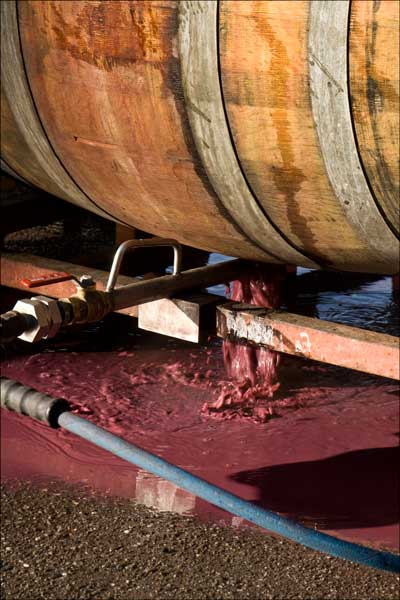
Thieving
The act of ‘thieving’ wine and tasting young wine is an educational process. Using a wine thief, checking on the progress a few times during the year as it matures gives the winemaker a window into how the wine is progressing-does it need more time? Less? The wine thief itself, pictured above, is nothing more than a glass tube for syphoning out a small sample of the wine. If you are trying a wine from the recent harvest be prepared-the tannins are pretty harsh but the silver lining is you get a glimpse of things to come—the fruit components, the acidity, the body—and some of the characteristics will dominate the others. It boils down to a matter of time and winemakers are a patient lot. This equals a nicely aged wine ready to be bottled with many of the rough edges seasoned by time and the barrel itself.
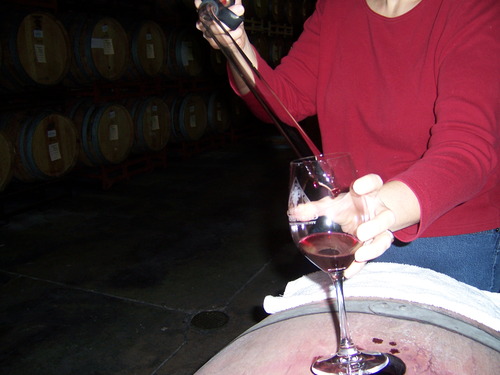
-
Postcards from Home: Winter Chores
January 22, 2021 14:21
This month is when the vineyards get their annual 'haircut'-which is a phrase I learned from Richard Thomas, the man I took viticulture classes from 35 years ago. I was learning about the grape side of the business and it was a hands-on experience. We pruned vines on the Shone Farm ranch-I am not sure the vines have recovered from my amateur pruning skills. These photos are all taken in our Mother Clone Zinfandel vineyard on the Home Ranch. Please note these were taken a few years ago, pre-pandemic. It shows how pruning is done both up close and as the crew makes their way up one of the blocks. It also shows how this is a true skill, honed by many hours of vineyard work.
Up Close & PersonalAs you can see the shears are cutting away the old growth but not all of it. There is enough left for two buds which will remain dormant until the spring and budbreak. These are the foundation of the next vintage’s crop. You'll also note the former pruning scars on the arm of the vine-these were made years ago and helped to form the vine itself, aiming the arms outward so that as they bear the new crop it will be in the best placement for ripening. Quite a skill to prune with the future in mind.
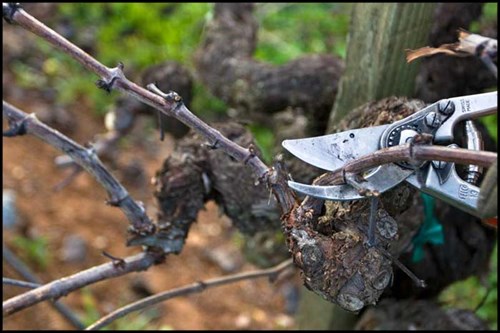
Side by Side
Don’t you love it when you see the before and after photos of someone’s haircut? I do-it helps to see what was done to make it so different. Here the canes have all been cut away and as mentioned before the 2 or 3 inches left contain the next year’s vintage now waiting for the start of the growing season. For now the vines are content soaking up the nutrients for the next year’s harvest.

Making Progress
There are 115 acres of vine to prune over four pieces of property: the Home Ranch, East Side Vineyards, Wisdom Vineyard and Bushnell Vineyard. It takes time because when it rains the crew waits until the soil is less muddy and pruning it by hand is another reason to take it vine by vine. The canes you see being pruned are left between the rows and a chopper will come along and return them to the soil.
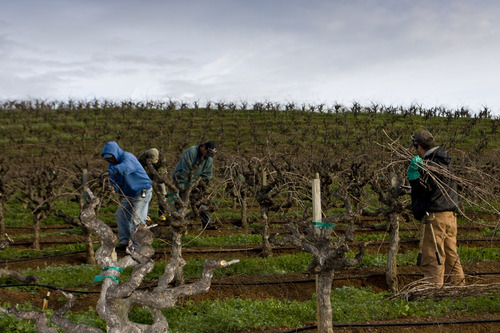
Vines for Days
The view from above shows a large section of our Home Ranch with the Sangiovese to the west, Cabernet Sauvignon to the south and Zinfandel as far as the eye can see. Each and every vine will be pruned by the time Spring rolls around.
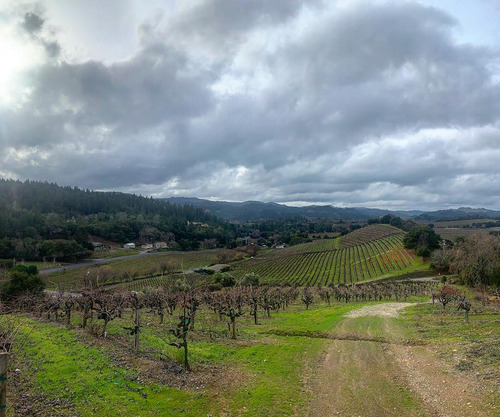
Just for Fun: Jasper in the Snow
I love this shot of Jasper looking out over the expanse. While it isn’t our vineyard, nor is it anywhere near Dry Creek Valley, the majesty of the pines, beauty of the snow and the peaceful time of day this was taken all come together as I look through Jasper’s hopeful eyes-maybe a squirrel, maybe a friend or maybe just a nice walk together up the hill.
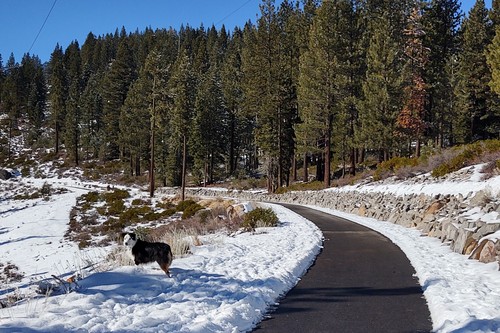
Categories
- COVID
- Follow the Vineyard
- Note from Home
- PairItWithPed
- Pandemic
- pedroncelli
- Port
- Postcards from Home
- Pruning
- Seasons in The Cellar
- Tasting Room
- Thanksgiving
- Vintage Notes
- Winemaking
- Women's History Month
Recent posts
-
91 Years Later
-
Come Over October: It's About Community
-
Come Over October
-
A Legacy Continues!
-
Everything Old is New Again
Popular tags
- Oak
- Holding steady
- Recipes
- family
- Block 007 Cabernet Sauvignon
- Library Wine
- Estate Vineyard
- Lake Sonoma
- Down to Earth
- Reserve
- COVID19
- Sauvignon Blanc
- Seasons in The Cellar
- OpenThatBottleNight
- Habit
- Follow the Vineyard
- Heat wave
- Cellar Master
- cheese
- Schotzki
- Sonoma County
- American Oak
- Courage Zinfandel
- Cabernet Sauvignon
- Easter
- Pedroncelli
- cooking with wine
- Mother Clone
- Rosé
- Merlot
- Harvest 2022
- Finding Your Roots
- food and wine
- Barrels
- 1974 Cabernet Sauvignon
- note from home
- COVID Coffee Chat
- Anniversary
- Bushnell Vineyard
- Pandemic
- Cookies
- Pantry
- Homecooking
- Crop set
- PairitwithPed
- Four Grapes Port
- French Oak
- Dry Creek Valley
- Pruning
- newsletter





